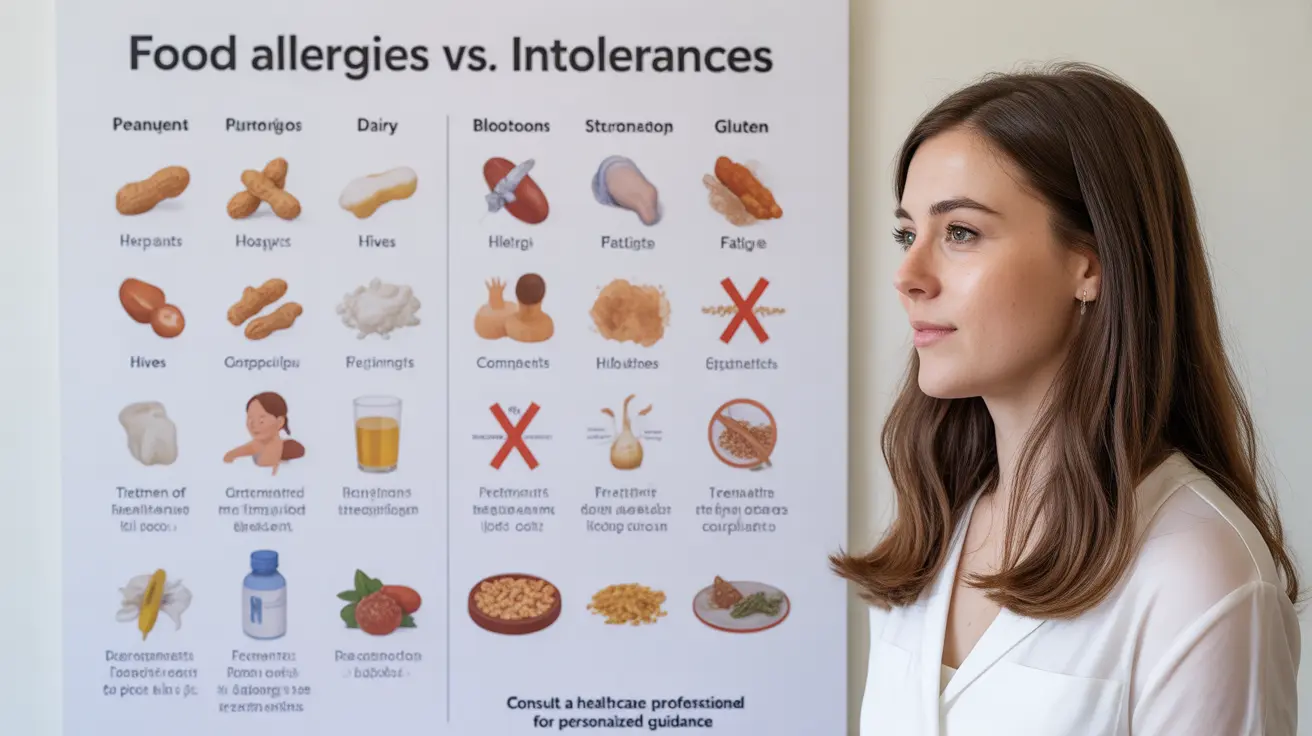Understanding the distinction between food allergies and food intolerances is crucial for proper diagnosis, treatment, and management of adverse food reactions. While both conditions can cause discomfort and affect quality of life, they involve different biological mechanisms and require different approaches to treatment.
This comprehensive guide explores the key differences between food allergies and intolerances, helping you understand symptoms, diagnosis methods, and management strategies for both conditions.
Understanding Food Allergies
Food allergies are immune system responses that occur when the body mistakenly identifies certain food proteins as harmful. These reactions can be immediate and potentially life-threatening.
Common Food Allergy Symptoms
- Hives or skin rash
- Swelling of lips, tongue, or throat
- Difficulty breathing
- Anaphylaxis (in severe cases)
- Nausea and vomiting
- Dizziness
Most Common Food Allergens
The "Big Eight" food allergens account for approximately 90% of all food allergies:
- Milk
- Eggs
- Peanuts
- Tree nuts
- Fish
- Shellfish
- Soy
- Wheat
Understanding Food Intolerances
Food intolerances typically involve the digestive system rather than the immune system. They occur when the body cannot properly break down certain components of food, often due to enzyme deficiencies or sensitivity to specific food chemicals.
Common Food Intolerance Symptoms
- Bloating
- Gas
- Diarrhea
- Stomach pain
- Headaches
- Fatigue
Diagnosis and Testing Methods
Food Allergy Testing
Food allergies are typically diagnosed through:
- Skin prick tests
- Blood tests measuring specific IgE antibodies
- Oral food challenges under medical supervision
- Detailed medical history evaluation
Food Intolerance Testing
Food intolerances are often identified through:
- Elimination diets
- Breath tests (for lactose intolerance)
- Food and symptom journals
- Blood tests for celiac disease (if suspected)
Management and Treatment Strategies
Managing Food Allergies
Food allergy management requires strict avoidance of trigger foods and includes:
- Reading food labels carefully
- Carrying emergency medication (like epinephrine auto-injectors)
- Wearing medical alert jewelry
- Having an emergency action plan
Managing Food Intolerances
Food intolerance management may be more flexible and can include:
- Limiting problematic foods without complete elimination
- Taking enzyme supplements when needed
- Working with a dietitian to ensure proper nutrition
- Keeping a food diary to identify triggers
Frequently Asked Questions
What are the key differences between food allergies and food intolerances?
Food allergies involve the immune system and can cause severe, immediate reactions, including anaphylaxis. Food intolerances affect the digestive system, typically cause less severe symptoms, and may allow for small amounts of problem foods to be consumed without serious consequences.
What are the symptoms, causes, and treatment options for lactose intolerance compared to milk allergy?
Lactose intolerance involves digestive symptoms like bloating and diarrhea due to the inability to digest milk sugar, and can be managed with lactase enzymes or dairy alternatives. Milk allergies trigger immune responses that can cause immediate, severe reactions requiring complete milk protein avoidance and emergency medication availability.
How do you diagnose and manage a food intolerance versus a food allergy in children?
Food allergies in children are diagnosed through specific allergy tests and require strict avoidance of trigger foods. Food intolerances are often identified through elimination diets and symptom monitoring, with management focusing on limiting rather than completely avoiding problem foods.
Can food intolerances, like gluten sensitivity, ever lead to severe reactions similar to those experienced with food allergies?
While food intolerances typically don't cause life-threatening reactions, some conditions like celiac disease can cause serious long-term health problems if untreated. However, these reactions differ from the immediate, severe responses seen in food allergies.
What are the best strategies for preventing and managing food allergy reactions in individuals with severe allergies?
Key strategies include strict avoidance of allergens, careful label reading, having an emergency action plan, carrying prescribed medications, educating family and friends, and wearing medical alert identification. Regular consultation with healthcare providers is also essential.




